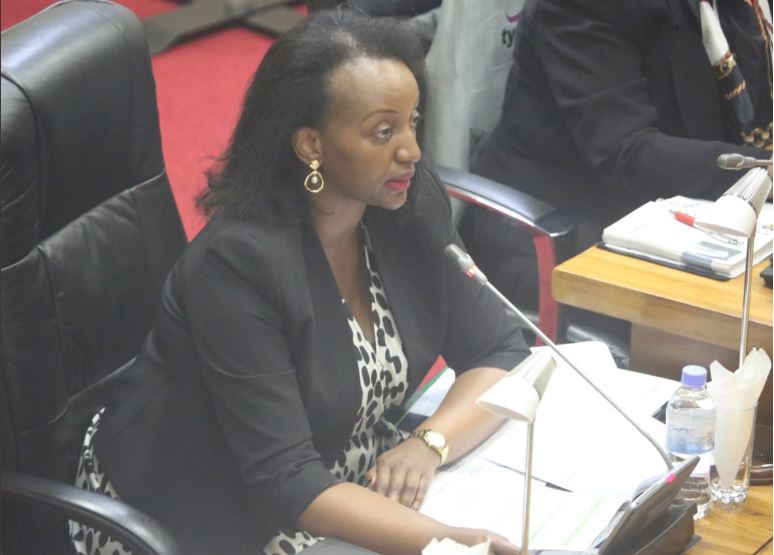
Soraya Hakuziyaremye, Minister of Trade and Industry
The ministry of trade has assured parliament that issues surrounding cross border markets will be solved as soon as possible to have the projects further reduce imports from neighboring countries.
This assurance comes after the minister was summoned more than three times to explain why the Auditor General’s report (2017/2018) faulted her ministry over mismanagement of four cross border projects implementation.
The projects were funded by the World Bank and Trademark East Africa at a tune of Rwf1.5billion each on the borders of Rubavu, Rusizi, Cyanika, and Nyamasheke districts.
The objective of constructing the border markets was to ease informal cross border trade and improve storage facilities but also close the informal trade deficit.
However, Parliamentary findings showed that only two were constructed and functional in Rubavu and Rusizi while others faced issues of construction setbacks as a result of poor feasibility studies, malpractice in tendering procedures, defaulting constructors, and use of low-quality materials used in construction.
This, for instance, in Karongi cross border market, led to low market occupancy, traders abandoning the structures and thus retarding the initial intention of which the border markets were constructed as a pilot project that will be replicated across Africa.
Karongi which sits on Lake Kivu connecting Rwandan traders to DR Congo businessmen who come twice a week to buy animals, meat and vegetables, current stands at 26% occupancy rate.
This particular market had three feasibility studies conducted on it with district officials changing the plans one after another.
Local traders say that the Karongi market was constructed far away from the trading center and its warehouse equally inaccessible as a result of lack of an access road.
Despite these challenges coupled with temporary low border trade between Rwanda and its neighbors Uganda and Burundi the minister showed that by 2018 Rwanda didn’t have a trade deficit gap.
She said that Rwanda managed to close the gap imports in 2012, by increasing its exports to a tune of $411 million which are higher compared to imports worth $374 million.
“There has been an improvement for example export to Burundi, Tanzania, DR Congo and Uganda increased to $411m in 2018 from $37m in 2012,” Soraya M. Hakuziyaremye, the Trade minister said.
Cross border issues have upset the Public Accounts Committee to recommend prosecution to follow up the case, resulting to some officials investigated therein, and MPs still had concerns.
For instance, In Rubavu market occupancy stood at 87%, Rusizi at 61%, Cyanika in Burera stood at 49% and Karongi at 26%.
“This looks like a perpetual issue of incompetence. For example, building a warehouse far away from the road is really imprudent,” said MP Théogène Munyangeyo, who sat on the Public Account Committee that evaluated these issues.
In the minister’s response, she said that except for Karongi, occupancy in most markets was promising and measures of getting new management have been taken to boost the market.
“We want 99.5% occupancy by next year. And solve the problems of Karongi with the help of monitoring and evaluation team. We will mainly focus on the Karongi market to ensure that this happens,” the minister said.
On a positive note, Hakuziyaremye said that Rwanda’s Cross border markets Strategy is to be ready and approved this June and implementation for 2021, but also be used as roll-out example for other African countries, at a time when the African Continental Free Trade Agreement (AfCFTA) is in high gear.


